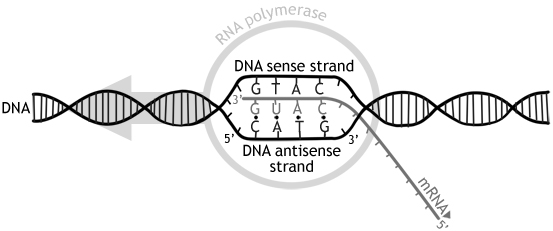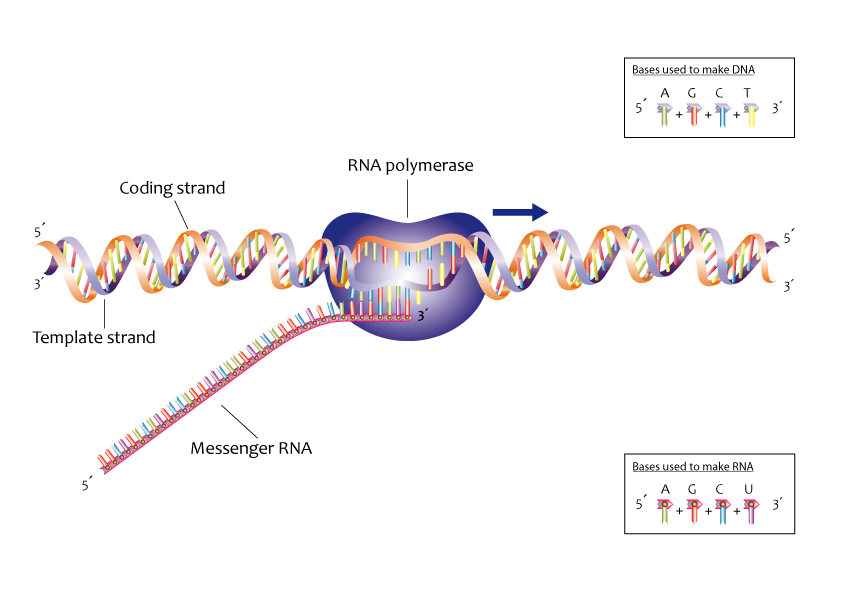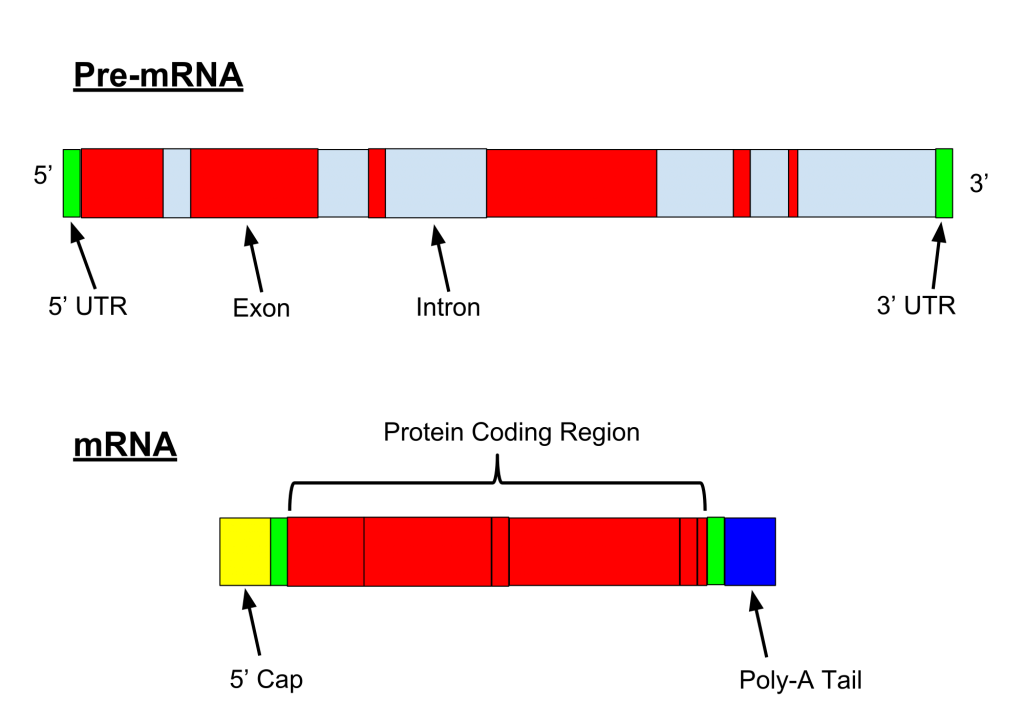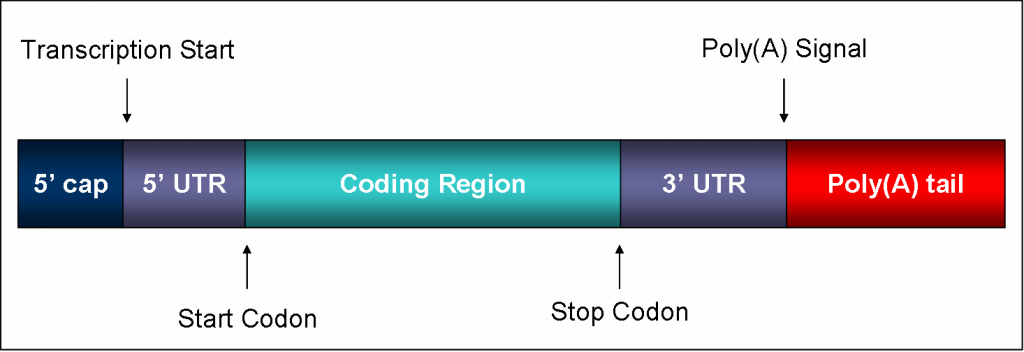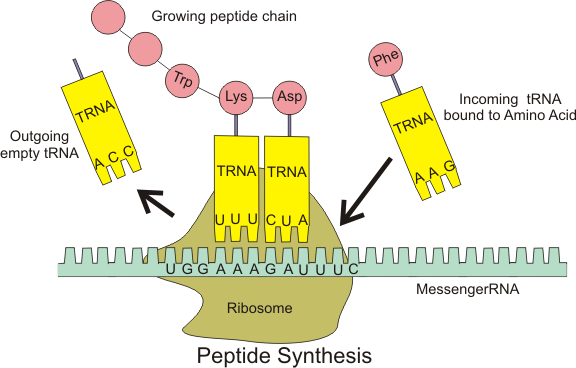Contents
Protein Synthesis
Protein Synthesis
Proteins are created on the ribosomes. The production of proteins from the code within DNA occurs in two main stages:
- Transcription – where the DNA code for one gene is copied into mRNA.
- Translation – where the mRNA joins with a ribosome, and a corresponding tRNA molecule brings the specific amino acid the codon codes for.
mRNA is a short, single-stranded molecule that is found in both the cytoplasm and nucleus. It is made during transcription in the nucleus. It is copied from DNA and is therefore complementary to the DNA sequence. In mRNA, groups of three adjacent bases are called codons.
tRNA molecules are found in the cytoplasm and have amino acids attached to them. Each tRNA is specific for one amino acid, determined by the anticodon on it (three bases). Each tRNA molecule has an anticodon that is complementary to the codons on mRNA. tRNA is involved in translation. It carries the amino acids that are used to make proteins to the ribosomes. tRNA is a single polynucleotide strand that is folded into a clover shape. Hydrogen bonds between base pairs hold the shape.
Transcription
This is the process in which a complementary mRNA copy of one gene on the DNA is created in the nucleus. mRNA is much smaller than DNA, so it is able to carry the genetic code to the ribosome in the cytoplasm to enable the protein to be made.
The DNA helix unwinds to expose the bases to act as a template. Only one chain of the DNA acts as a template, and this is the antisense strand. Like with DNA replication, this unwinding and unzipping is catalyzed by DNA helicase. DNA helicase breaks the hydrogen bonds between bases. Free mRNA nucleotides align opposite exposed complementary DNA bases. The enzyme RNA polymerase bonds together the RNA nucleotides to create a new RNA polymer chain. One entire gene is copied. Once copied, the mRNA is modified and then leaves the nucleus through the nuclear envelope pores.
mRNA Modification
The newly synthesized strand of mRNA is called pre-mRNA before it has been modified. The key modifications are the removal of the introns and protective caps added to protect the mRNA against degrading enzymes in the cytoplasm. To provide protection, the pre-mRNA has a 5’ cap added. This is a protective cap added to the 5’ end of mRNA. At the 3’ end, a poly A tail is added. This is several adenine RNA nucleotides. Both of these modifications protect both ends of the mRNA from being hydrolyzed by endonuclease enzymes.
The second modification is the removal of the ‘junk DNA’ or introns. These are removed by a protein called a spliceosome; therefore, the removal is called splicing.
The mRNA is spliced in many different ways, allowing a single gene to actually result in the creation of multiple proteins. This process is called alternative splicing. Humans have approximately 23,000 genes, but at least 90,000, so the creation of these extra proteins via alternative splicing of the introns is why the introns are important.
Translation
This is the stage in which the polypeptide chain is created using both the mRNA base sequence and the tRNA. Once the modified mRNA has left the nucleus, it attaches to a ribosome in the cytoplasm. The ribosome attaches at the 3’ end of the mRNA at the start codon, AUG. The tRNA molecule with the complementary anticodon to the AUG codon aligns opposite the mRNA, held in place by the ribosome. The ribosome will move along the mRNA molecule to enable another complementary tRNA to attach to the next codon on the mRNA.
The two amino acids that have been delivered by the tRNA molecule are then joined via a peptide bond, which is catalyzed by an enzyme. This continues to occur until the ribosome reaches the stop codon at the end of the mRNA molecule. The stop codon does not code for an amino acid, and therefore the ribosome detaches, and translation ends. The polypeptide chain is now created and will enter the Golgi body for folding and modification.
- Where does transcription take place?
- Nucleus
- What is made during transcription?
- mRNA
- What enzyme is involved?
- RNA polymerase / DNA helicase
- What is the job of a spliceosome?
- To remove introns
- What happens after transcription?
- Translation


